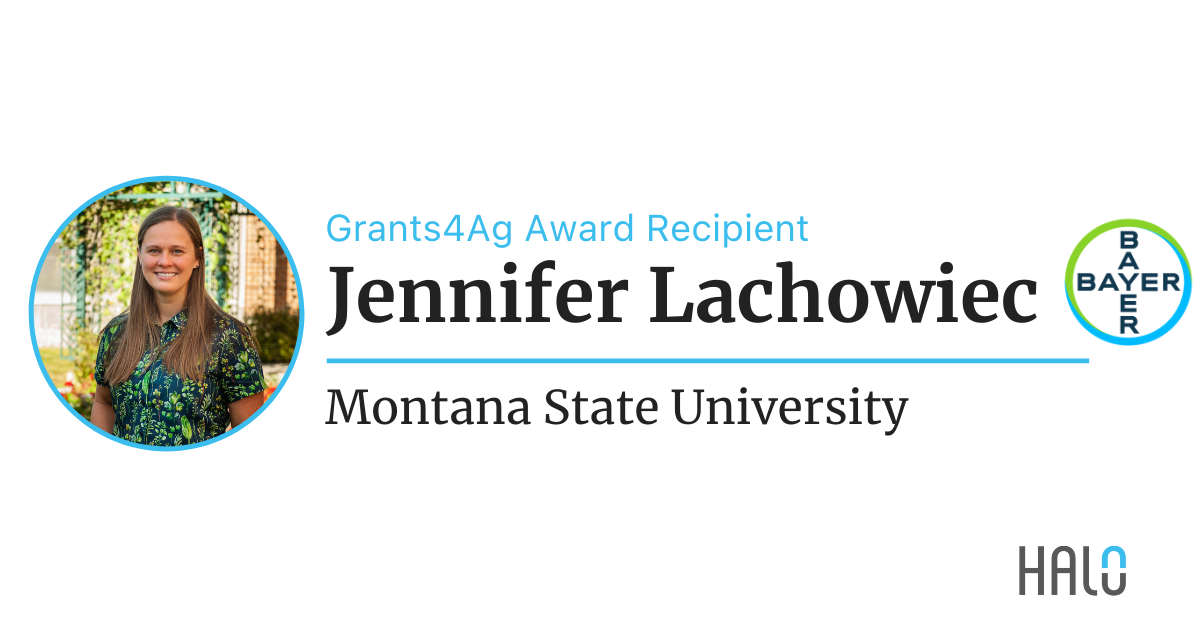Similar to how people have high temperature fevers to fight infections, herbicide resistant weeds have cells ready to fight against herbicides. By using genomics and phonemics approaches, Jennifer Lachowiec, William Dyer, and Barbara Keith are working to block this fever-state so that herbicide resistant weeds can no longer fight against the chemicals. View Halo Profile >>
About Jennifer Lachowiec
Dr. Jennifer Lachowiec is an Associate Professor of Plant Genetics and Genomics at Montana State University. Lachowiec is from Bozeman, Montana and completed her PhD at the University of Washington. She is involved with the North American Plant Phenotyping Network.
Tell us about your research.
Our laboratories study the molecular mechanisms that confer resistance to increasing numbers of herbicides in Avena fatua (wild oat) a globally pernicious weed. By using genomics and phenomics approaches, we are finding that resistance is likely controlled by alterations in stress-responsive transcription factors and their genomic targets. The connections between the role of herbicide resistance and genes for tolerating stresses bring about important questions about how climate change will affect the efficacy of herbicides that producers rely on in the future.
The connections between the role of herbicide resistance and genes for tolerating stresses bring about important questions about how climate change will affect the efficacy of herbicides that producers rely on in the future.
Can you explain that to a non-scientist?
We study how weeds respond to, and become resistant to, weed control chemicals called herbicides. Just as people have high temperature fevers to fight infections, we see that herbicide resistant weeds almost appear to have a fever. Their cells are waiting to fight against a stress, like the stress of an herbicide. Our research seeks ways to block this fever-state, so that herbicide resistant weeds can no longer fight against the chemicals.
Why did you choose this area of research?
Our focus on the integration of herbicide and stress has a long past. Our previous studies of multiple herbicide resistance in wild oat have led us to develop multiple tools that are enabling our research. We have a fully sequenced wild oat genome, populations that enable genetic mapping, and a deep knowledge of wild oat physiology and its responses to herbicides. Together these tools make wild oat a well-characterized and powerful model system for dissecting not only herbicide resistance, but also the fundamentals of plant stress responses.
[Our research] can improve crop tolerance to poor growing conditions and substandard soils, greatly enhancing global food security.
What are some of the real-world applications of your work?
The most obvious application of our research is supporting producers in their weed management strategies. Our research may influence the choice of herbicide, and when and how to apply herbicides given the current climatic conditions. Specific knowledge about herbicide resistance mechanisms will aid in the discovery of novel, sustainable pest control strategies for agriculture. More broadly, our work contributes towards understanding how plants respond to stresses. With this knowledge we can improve crop tolerance to poor growing conditions and substandard soils, greatly enhancing global food security.


